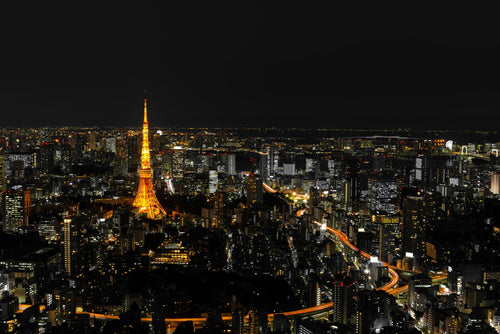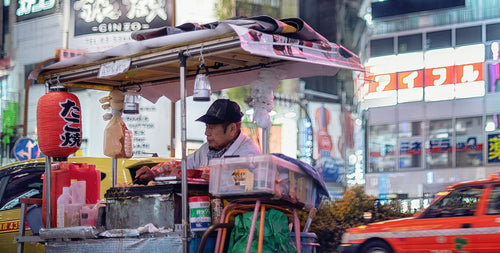
Best Seasons for Traveling in Japan
Japan is a country of diverse climates, stunning landscapes, and a rich tapestry of seasonal festivals. With each season offering unique experiences, knowing the best times to visit can make a significant difference in the quality of your travel. Whether you’re after cherry blossoms in spring, cool mountain retreats in summer, vibrant autumn foliage, or the winter wonderland of snowy Hokkaido, this guide covers the best seasons for visiting Japan, highlighting the advantages, popular activities, and regional specialties each season offers.
Contents
3. Autumn (September - November)
4. Winter (December - February)
1. Spring (March - May)
Spring is one of the most popular times to visit Japan, as the country comes alive with cherry blossoms (sakura), mild weather, and a festive atmosphere. Sakura season, typically from late March to early April, is a magical time when cherry blossoms bloom across Japan, from Okinawa in the south to Hokkaido in the north. Hanami, the tradition of cherry blossom viewing, draws crowds to parks, temples, and riversides to enjoy picnics under the pink blossoms.
Beyond cherry blossoms, spring offers other beautiful flowers such as plum blossoms, wisteria, and tulips, as well as cultural events like the Takayama Spring Festival and Kyoto’s Miyako Odori dance performances. The mild temperatures and low humidity make it ideal for outdoor activities and exploring historical sites.
Highlights: Cherry blossoms, hanami (flower viewing), vibrant festivals, and mild weather.
2. Summer (June - August)
Summer in Japan is hot and humid, especially in urban areas like Tokyo and Osaka. However, this season also brings exciting festivals, lush green landscapes, and lively fireworks displays (hanabi taikai). The Japanese Alps, Hokkaido, and other mountainous regions provide cooler, refreshing escapes for hiking and nature activities, attracting travelers looking for outdoor adventure.
Early summer is marked by tsuyu (the rainy season), primarily affecting areas from Tokyo southward. Despite the rain, summer is a vibrant time with colorful festivals like Gion Matsuri in Kyoto, Awa Odori in Tokushima, and Nebuta Matsuri in Aomori. Fireworks shows are a highlight, with some of the biggest displays occurring in Sumida River and Tokyo Bay.
Highlights: Fireworks festivals, traditional summer festivals, beach visits, and cooler mountain retreats in Hokkaido and the Japanese Alps.
3. Autumn (September - November)
Autumn is considered one of the best seasons to visit Japan due to the stunning fall foliage, pleasant weather, and cultural festivals. The changing colors of the leaves, or koyo, transform mountains, temples, and parks into vibrant displays of red, orange, and yellow. Popular koyo spots include Kyoto’s Arashiyama, Tokyo’s Rikugien Garden, and Nikko’s mountainous landscape.
September still sees remnants of the summer heat and occasional typhoons, but October and November bring cooler, more stable weather. Autumn is also harvest season, a great time for food lovers to enjoy seasonal specialties like sweet potatoes, chestnuts, and matsutake mushrooms. Various regional festivals, such as the Jidai Matsuri in Kyoto, add a cultural touch to the autumn experience.
Highlights: Fall foliage (koyo), cultural festivals, seasonal foods, and comfortable temperatures for sightseeing.
4. Winter (December - February)
Winter in Japan is known for its snow-covered landscapes, especially in northern regions and mountainous areas. Hokkaido, the Japanese Alps, and areas like Nagano and Niigata offer fantastic skiing and snowboarding opportunities. Japan’s famous “snow monsters” (frost-covered trees) in Zao Onsen are a winter spectacle worth seeing, and hot spring bathing (onsen) amidst the snow is a quintessential winter experience.
Winter also brings enchanting illuminations across major cities, with Tokyo, Kobe, and Osaka boasting spectacular light displays. For those visiting in February, the Sapporo Snow Festival features elaborate ice sculptures and a winter wonderland atmosphere. Winter in Japan also provides an opportunity to try traditional New Year’s dishes and observe the cultural customs of oshogatsu (Japanese New Year).
Highlights: Skiing and snowboarding, winter festivals, hot spring bathing in snowy landscapes, and festive illuminations.
5. Travel Tips for Each Season
Spring Tips: Pack layers as temperatures can fluctuate, and plan your cherry blossom viewings in advance to avoid crowds. The cherry blossom forecast is updated annually, so checking dates helps ensure you visit at peak bloom.
Summer Tips: Stay hydrated, wear light clothing, and use sunscreen to cope with the heat and humidity. If you’re attending festivals or fireworks displays, arrive early to secure a good viewing spot.
Autumn Tips: Layering is recommended as temperatures cool down, especially in the mountains. For the best fall foliage experience, research peak times for different regions as they vary across the country.
Winter Tips: Dress warmly with waterproof clothing if visiting snowy areas. Book accommodations and ski passes in advance during peak winter sports season. Winter illuminations are popular, so plan your visits during weekdays if possible to avoid larger crowds.
6. Conclusion: Choosing the Best Season for You
Choosing the best season to visit Japan depends on your interests and travel style. Spring and autumn are ideal for mild weather and natural beauty, while summer offers lively festivals and beach destinations. Winter is perfect for snow sports enthusiasts and those looking to experience Japan’s serene snowy landscapes. Each season provides a unique view of Japan’s natural and cultural wonders, making it a destination worth exploring year-round.
Whether you’re drawn to cherry blossoms, colorful festivals, or serene winter scenes, Japan offers unforgettable experiences in every season. By planning your visit around the seasonal highlights that appeal to you most, you’re sure to have an enriching and memorable journey.
分享
You may also like
-

參觀日本的情趣酒店區:會發生什麼
日本的情趣酒店區以其獨特而迷人的隱私、創造力和奢華而聞名。雖然情趣酒店最初是為情侶提供私人休養地,但如今已發展成為日本文化和熱情好客的獨特方面。這些飯店提供主題客房、獨特的設施和令人驚訝的實惠價格,是日本夜生活的一個有趣的方面。本指南...
-

東京 24 小時咖啡廳的 10 大深夜用餐地點
東京充滿活力的夜生活不僅限於酒吧和夜總會,其蓬勃發展的深夜餐飲文化可以讓美食愛好者隨時滿足。該市的 24 小時咖啡館為當地人和尋求放鬆、充電和享用美食的地方的遊客提供舒適的空間和多種美食選擇。從適合家庭的餐廳到時尚的自習休息室,這些咖...
-

東京最佳夜間探險夜遊
東京的夜生活以其活力、活力以及傳統與現代體驗的獨特融合而聞名。從燈火通明的寺廟到霓虹燈閃爍的城市景觀和隱藏的文化瑰寶,東京提供一系列夜間旅遊,揭示這座城市的多樣化美麗和天黑後的脈動。無論您是尋求文化見解、壯麗景色,還是對東京最令人興奮...
-

日本深夜飲食文化:8 種最佳街頭小吃
日本的深夜飲食文化是一種充滿活力的體驗,尤其是在東京和大阪等繁華城市,美味的街頭小吃攤和休閒餐廳提供獨特的風味直至深夜。從美味的拉麵到鐵板串,日本夜食提供了該國多樣化烹飪的正宗味道。以下是您在日本進行難忘的深夜冒險時需要嘗試的八種街頭...
目前沒有相關文章。




